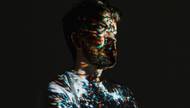As we look beyond the darkness of these times to a Vegas entertainment renaissance born of a viral crisis, one likely path already has its pieces in place.
Consider the amount of talent flowing through this entertainment nexus of ours. Live audiences are hungry for shows. Video streaming technology has been advancing steadily, consumers have grown accustomed to paying for online content, and companies have become adept at delivering it smoothly.
The future of Vegas entertainment
Fusing the excitement of exclusive shows by big-name artists with livestreaming’s global reach offers a solution for how to succeed in this vastly new environment.
The cameras zoom in—on keyboardist’s Page McConnell’s fingers, the details of Jon Fishman’s drum kit and an exchange of glances between guitarist Trey Anastasio and bassist Mike Gordon—as the quartet’s “Golden Age” jam begins swelling into something momentous.
It’s a close-up view you’d never get in person, even if you were in the front row for that show, an October 2016 performance by the jam band Phish at MGM Grand Garden Arena in Las Vegas
The concert aired last month as part of Phish’s webcast series, “Dinner and a Movie,” a weekly Tuesday-night LivePhish.com giveaway throughout the global coronavirus shutdown. But, slashed cost aside, streamed video is nothing new for Phish and its fans. For more than a decade, the band, through a partnership with livestreaming platform Nugs.net, has made most of its shows available to fans in real time—ranging from $30 a pop for standard definition to $50 for 4K, at last check.
And that model could provide a clue about the way live concerts might look in 2020 and potentially beyond, as shuttered music venues and touring artists adapt to their new reality.
Twelve years ago, startup company DeepRockDrive, describing itself as “the world’s first interactive online venue,” invited Las Vegas Weekly to witness a concert at its headquarters, a large blue warehouse located near the Palms.
Arizona-based indie band Peachcake was the featured act, but rather than perform for a roomful of humans, the musicians played to an array of video screens, which relayed fans’ reactions back from afar: mini lighters, devil horns, kissing lips and comments.
The scene felt wildly futuristic at the time (this was 2008, remember, before social media emojis became a way of life), and DeepRockDrive didn’t last, shuttering after about a year. But as we know now, its creators were onto something big.
“They were just ahead of the market … way ahead,” says Chris Bitonti, director of marketing for Brooklyn Bowl Las Vegas.
Brooklyn Bowl dabbled with concert livestreaming prior to the pandemic—sending out free webcasts of Vegas sets by acts like Built to Spill, The Marcus King Band and Keller Williams—and has continued such efforts since the shutdown, offering up archival gigs, virtual DJ sets and an artist look-back series called “That Show Was Epic,” all through website Fans.com.
Now, Brooklyn Bowl Chief Operating Officer Chris White says, his company is considering ways to livestream fresh shows from its concert halls—here and elsewhere—with few if any fans in the rooms.
“We’ve wired all of our buildings to be able to push out content on the web, so we’re well-suited to be able to do it. … We’ve done it before, as more of an opportunistic webcast when it made sense for us and for the band to be able to put that out there, and we’ve seen success with it,” he says. “Now, we’re seeing different opportunities for new content that would be streamed out, with a limited audience or no audience. We’re starting to work through some of those, and we’ll be announcing some in the very near future, in Nashville and in Vegas, as well.”
The first—an acoustic set from Jason Isbell and Amanda Shires—will take place May 15 from Brooklyn Bowl Nashville, streaming on Fans.com at 5 p.m. Vegas time, with a suggested donation to benefit Isbell’s crew and the MusiCares COVID-19 Relief Fund.
In preparation for those sorts of events, White says he and his team have been working out logistics—the number of bodies required to run cameras, lighting, sound and the livestream, and “how people come into the building and how they’re separated from each other in a way to make sure that everyone’s safe.”
But the biggest unknown remains the most significant: Can the model pencil out?
Could Brooklyn Bowl and other venues along the Las Vegas Strip, from the Colosseum at Caesars Palace to Park Theater at Park MGM, morph into homes for “Live From Las Vegas” concerts? Audiences would be limited, in accordance with social-distancing guidelines, paying higher prices for in-person access. With the proper formula—say, a close-up Lady Gaga jazz set combined with dinner and cocktails—that ticket could eclipse the old Joint’s legendary Rolling Stones visits for demand and exclusivity.
Those attendees could also create an electric atmosphere, adding to the excitement for the other crowd—the unlimited viewership tuning in around the globe, by way of pay-per-view livestream. For decades, boxing has relied on similar logistics—with a larger in-person crowd, sure, but with pay-per-view buys as a huge piece of the pie—often with Las Vegas as the hub. Why not concerts?
“I think if anybody could figure out how to stream live performance with full sound, lights and the concert experience, Las Vegas definitely could,” says Dave Brooks, Billboard’s senior director for live and touring. “You’re seeing more artists wanting to take streaming performances to the next level … [and] obviously Vegas has some of the best production in the world, especially when you look at what they’ve built for the residency shows, from Aerosmith to Lady Gaga to Shania [Twain]. So I definitely think there’s something there.”
Also, the market would seem to have been primed during the pandemic shutdown, with all forms of streaming on the rise. According to a recent Nielsen Music/MRC Data study of more than 1,000 U.S. consumers over the age of 13, music performance video streaming rose 8.1% from mid-March to early April, and 18% of teenage respondents watched a livestreamed performance in early April, up from 7% in late March.
Bitonti and White mention sponsorships and subscriptions as potential solutions to livestreaming’s financial puzzle. “Streaming is well-suited to the sponsorship side—you can reach a wide audience,” White says. As for subscriptions, he asks, “Is it just hardcore music fans that will want to engage with this? Even if it is, it’s still a relatively robust market to be able to operate within. It’s not like the Spotify market, where everybody listens to music or podcasts at some point. But it could still do great business.”
And, Billboard’s Brooks points out, livestreaming from a location like Las Vegas could take significant strain off the artists and their crews. “Going on the road can be really hard on them, especially if they have families or underlying health issues,” he says. “So I think this could really appeal to them long-term. They could generate revenue from streaming concerts and live comfortably. … Sure, it might not generate as much as they could on tour, but their cost would be a lot less.”
Sounds a lot like Las Vegas’ original residency concept: Why should Celine Dion spend money and energy touring around the world when she can set up in one place and have her fans come to her? At this unique point in history, when touring might feel difficult and potentially unsafe, why not set up in one city or venue and bring the audience to you—online?
In a neat bit of kismet, Mark Shunock began working up plans to livestream his Mondays Dark benefit shows and other events from his Las Vegas venue the Space in November—not knowing a global pandemic would shut down his room and all the others in a few short months.
“To be honest, I wanted my parents in Canada to be able to tune in to anything we were doing at the Space. That’s how it started,” says Shunock, a longtime Vegas performer known for starring in Rock of Ages, emceeing Golden Knights hockey games and more. “I also wanted to increase awareness for the Mondays Dark brand, to reach a larger demographic for our charities. Raising the money is one thing, but raising awareness is another.”
In January, Shunock started webcasting shows from the Space, to get feedback from family and friends. The learning curve was steep. “We forgot to put microphones in the audience. There were 300 people in the room, but you couldn’t hear them,” he laughs. “Can you imagine watching a stand-up comic or Saturday Night Live and there’s no laughing? The people at home are going, ‘Wow, these jokes are bombing,’ even though it felt great in the room.”
Shunock and his staff have fine-tuned their livestream—“the lights, killer sound, state-of-the-art 4K cameras”—and now, with the Space closed to in-person crowds indefinitely due to COVID-19, he’s opening it up in a different way, to any local or touring acts looking for a way to begin reaching audiences and earning a living again.
“If you’re an artist and you want to do a show, contact us [[email protected]]. We can do a live-streamed event, following CDC guidelines, with a paywall so you can charge people to watch,” he says. “Instead of just doing it on your couch in your house, you’re doing it in a venue with a state-of-the-art lights and sound system and an incredible four-camera livestream operation.”
And when crowds do return, whenever that might be, the Space is set up for an enticing combination. “Streaming is going to be a regular thing, just part of the package at the Space,” Shunock says. “You can sell 300 tickets, but you can also sell 2,000 or, who knows, 20,000 livestreams. Someone in Philadelphia can see you play in Las Vegas, in front of a very small audience.”
What would it take for that model to work on a larger scale, the way it does for Phish? That band’s fans tune in night after night—in person and online—because there’s no telling what they’ll miss if they don’t. Phish changes its setlist every show (it played 13 shows at New York City’s Madison Square Garden in 2017 without repeating a single song), and its improvisational jams further distinguish one concert from the next.
Few would suggest Kelly Clarkson or Keith Urban should do the same, but Lady Gaga, Bruno Mars, Santana and The Who, among other Vegas residents, have been known to vary their setlists to some extent. And even artists famous for grand productions of chart-topping hits could tweak their live approach to keep fans tuning in.
Acts could strip back the spectacle, presenting songs in sparser, less-traditional ways, as many musicians famously did on MTV Unplugged or VH1 Storytellers. They could bring in special guests, announced ahead of time to generate buzz. Fans might also pay to hear the debut of new material or to watch performances of full albums, perhaps presented over a series of nights (think: Aerosmith From Las Vegas—Get Your Wings Friday, Toys in the Attic Saturday, Rocks Sunday).
Brooks suggests virtual reality as another possibility, and distinctive artist combinations as one more. “I could see a scenario where people are watching a concert through VR headsets as a way to draw people to the city and create a have-to-be-there [feel],” he says. “And another [way] would be the Grammys model: two artists performing together. The opportunity to see something like that could be really powerful.”
Whatever form pay-per-view livestreaming from Las Vegas grows into, Shunock says he thinks once it begins, it will stay part of the concert landscape forever.
“I don’t think this will ever replace being there live,” he says. “But I think it’s coming. I think the minute one big name does it, it’s game on for everybody.”







